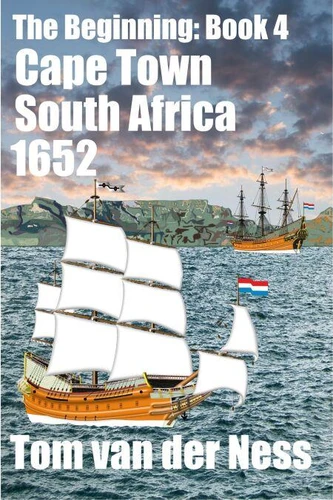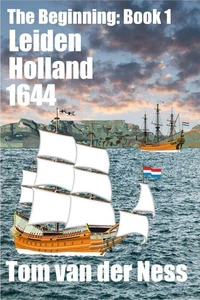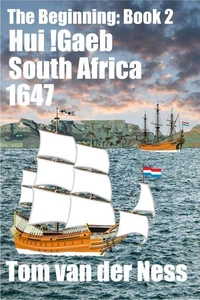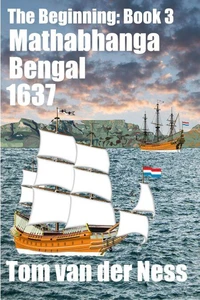Cape Town South Africa 1652: Historically accurate, the Dutch settlement from beached canvas tents to Cape Town. (# 4 The Beginning). The Beginning, #4
Par :Formats :
Disponible dans votre compte client Decitre ou Furet du Nord dès validation de votre commande. Le format ePub est :
- Compatible avec une lecture sur My Vivlio (smartphone, tablette, ordinateur)
- Compatible avec une lecture sur liseuses Vivlio
- Pour les liseuses autres que Vivlio, vous devez utiliser le logiciel Adobe Digital Edition. Non compatible avec la lecture sur les liseuses Kindle, Remarkable et Sony
 , qui est-ce ?
, qui est-ce ?Notre partenaire de plateforme de lecture numérique où vous retrouverez l'ensemble de vos ebooks gratuitement
Pour en savoir plus sur nos ebooks, consultez notre aide en ligne ici
- FormatePub
- ISBN8231032587
- EAN9798231032587
- Date de parution18/08/2025
- Protection num.pas de protection
- Infos supplémentairesepub
- ÉditeurWalzone Press
Résumé
The repetition of many of the names is because the people referred to actually all existed and the narrative about them is historically accurate. Of interest, is that the colonisation of the small peninsula at the tip of Africa took place almost two centuries before the European scramble for colonial rule across the rest of the continent. At twenty, Maria van Riebeeck marries a rehabilitated criminal, the infamous Jan van Riebeeck, to become the wife of the first commander of the European settlement of future Cape Town in sixteen-fifty-two from an edict by The Dutch East India Company -Vereenigde Oostindische Compagnie - VOC.
After annexing the land and building a fort, with assistance from the indigenes, the population grows from the incoming steady trickle of both Europeans and slaves alike. After the van Riebeecks leave, major transformations under Governor Simon van der Stel take place to properly establish a colony. After his death, The Groot Constantia wine estate, which was the jewel of the Cape at the time, changes hands and is factually owned by an emancipated slave captured as a child in Bengal ? Anna de Koningh.
It is a national monument today and is world renowned for its wine.
After annexing the land and building a fort, with assistance from the indigenes, the population grows from the incoming steady trickle of both Europeans and slaves alike. After the van Riebeecks leave, major transformations under Governor Simon van der Stel take place to properly establish a colony. After his death, The Groot Constantia wine estate, which was the jewel of the Cape at the time, changes hands and is factually owned by an emancipated slave captured as a child in Bengal ? Anna de Koningh.
It is a national monument today and is world renowned for its wine.
The repetition of many of the names is because the people referred to actually all existed and the narrative about them is historically accurate. Of interest, is that the colonisation of the small peninsula at the tip of Africa took place almost two centuries before the European scramble for colonial rule across the rest of the continent. At twenty, Maria van Riebeeck marries a rehabilitated criminal, the infamous Jan van Riebeeck, to become the wife of the first commander of the European settlement of future Cape Town in sixteen-fifty-two from an edict by The Dutch East India Company -Vereenigde Oostindische Compagnie - VOC.
After annexing the land and building a fort, with assistance from the indigenes, the population grows from the incoming steady trickle of both Europeans and slaves alike. After the van Riebeecks leave, major transformations under Governor Simon van der Stel take place to properly establish a colony. After his death, The Groot Constantia wine estate, which was the jewel of the Cape at the time, changes hands and is factually owned by an emancipated slave captured as a child in Bengal ? Anna de Koningh.
It is a national monument today and is world renowned for its wine.
After annexing the land and building a fort, with assistance from the indigenes, the population grows from the incoming steady trickle of both Europeans and slaves alike. After the van Riebeecks leave, major transformations under Governor Simon van der Stel take place to properly establish a colony. After his death, The Groot Constantia wine estate, which was the jewel of the Cape at the time, changes hands and is factually owned by an emancipated slave captured as a child in Bengal ? Anna de Koningh.
It is a national monument today and is world renowned for its wine.






